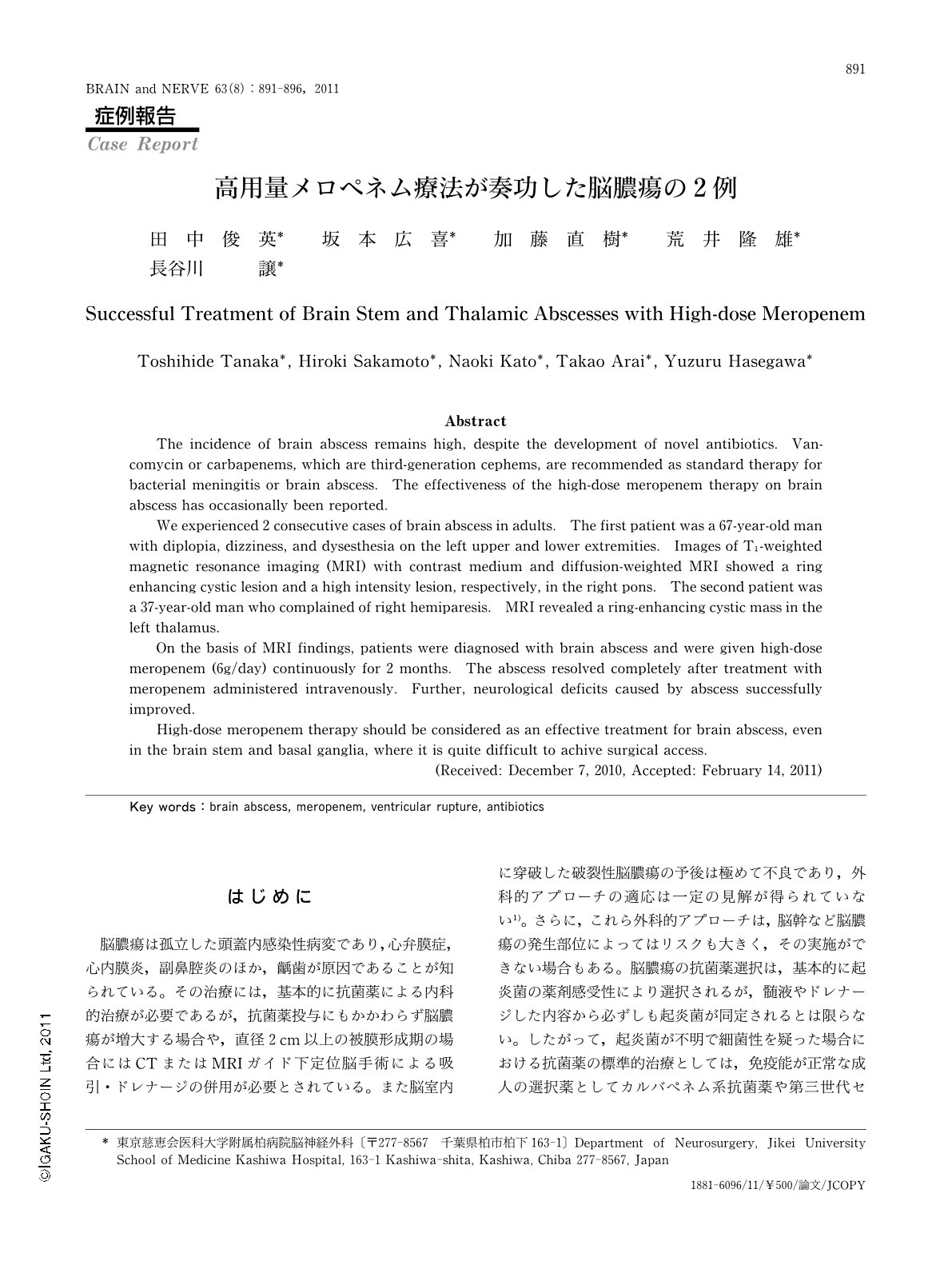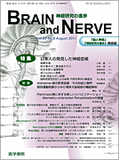Japanese
English
- 有料閲覧
- Abstract 文献概要
- 1ページ目 Look Inside
- 参考文献 Reference
はじめに
脳膿瘍は孤立した頭蓋内感染性病変であり,心弁膜症,心内膜炎,副鼻腔炎のほか,齲歯が原因であることが知られている。その治療には,基本的に抗菌薬による内科的治療が必要であるが,抗菌薬投与にもかかわらず脳膿瘍が増大する場合や,直径2cm以上の被膜形成期の場合にはCTまたはMRIガイド下定位脳手術による吸引・ドレナージの併用が必要とされている。また脳室内に穿破した破裂性脳膿瘍の予後は極めて不良であり,外科的アプローチの適応は一定の見解が得られていない1)。さらに,これら外科的アプローチは,脳幹など脳膿瘍の発生部位によってはリスクも大きく,その実施ができない場合もある。脳膿瘍の抗菌薬選択は,基本的に起炎菌の薬剤感受性により選択されるが,髄液やドレナージした内容から必ずしも起炎菌が同定されるとは限らない。したがって,起炎菌が不明で細菌性を疑った場合における抗菌薬の標準的治療としては,免疫能が正常な成人の選択薬としてカルバペネム系抗菌薬や第三世代セフェム系抗菌薬とバンコマイシン(vancomycin:VCM)の併用が推奨されているが,通常の感染性病変に比べ長期投与が行われる2)。中でもメロペネム(meropenem:MEPM)は髄液移行性もよく,痙攣誘発作用もほかのカルバペネム系抗菌剤と比べ少なく,細菌性髄膜炎や脳膿瘍などの中枢神経系の感染症に使用され,その有用性が報告されている3-11)。
今回われわれは,脳室近傍に発生した脳膿瘍に対してMEPMの高用量投与により治癒できた2症例を経験したので,文献的考察を含めて報告する。
Abstract
The incidence of brain abscess remains high, despite the development of novel antibiotics. Vancomycin or carbapenems, which are third-generation cephems, are recommended as standard therapy for bacterial meningitis or brain abscess. The effectiveness of the high-dose meropenem therapy on brain abscess has occasionally been reported.
We experienced 2 consecutive cases of brain abscess in adults. The first patient was a 67-year-old man with diplopia, dizziness, and dysesthesia on the left upper and lower extremities. Images of T1-weighted magnetic resonance imaging (MRI) with contrast medium and diffusion-weighted MRI showed a ring enhancing cystic lesion and a high intensity lesion, respectively, in the right pons. The second patient was a 37-year-old man who complained of right hemiparesis. MRI revealed a ring-enhancing cystic mass in the left thalamus.
On the basis of MRI findings, patients were diagnosed with brain abscess and were given high-dose meropenem (6g/day) continuously for 2 months. The abscess resolved completely after treatment with meropenem administered intravenously. Further, neurological deficits caused by abscess successfully improved.
High-dose meropenem therapy should be considered as an effective treatment for brain abscess, even in the brain stem and basal ganglia, where it is quite difficult to achive surgical access.
(Received: December 7,2010,Accepted: February 14,2011)

Copyright © 2011, Igaku-Shoin Ltd. All rights reserved.


